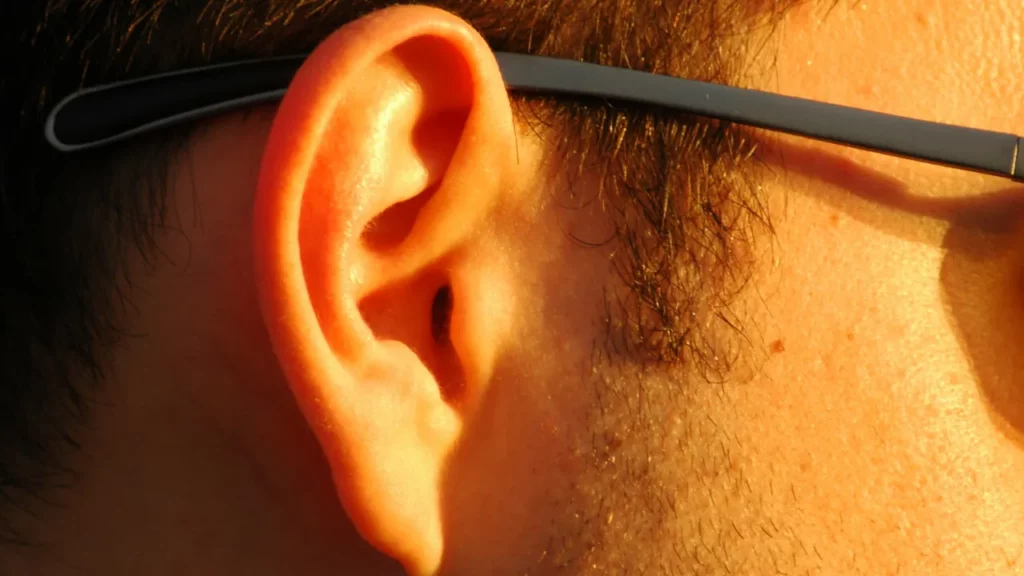As an audiologist, ear wax is a common subject of discussion with my patients. What is ear wax? Why do we need to have ear wax? What causes ear wax? What can I do to eliminate ear wax? Do I need to have my ears cleaned out? Can I clean my ears myself? These are all very common questions when it comes to ear wax. In the article below we are going to answer all of these questions and more.
What is ear wax and what does it do for our ears?
Ear wax, or Cerumen, is a naturally occurring substance in our ears. This substance is made up of oils from our skin, sweat, dry skin cells, hair, and dust and debris from the environment. While many people consider ear wax to be a little gross and annoying, it’s actually there for a reason, and is important to your ear health!
Ear wax is a lubricating substance in the ears, which helps keep the skin from becoming dry and irritated. Additionally, ear wax helps to maintain the natural ph balance, or biological ecosystem, of your ear. The presence of ear wax helps keep dirt and bacteria from building up inside the ear canals. Ear wax also has a scent to it that acts as a deterrent for insects who may otherwise find the ear to be a hospitable environment.
Common causes of ear wax build-up and blockages in the ear canal
As ear wax is a naturally occurring substance, your body is designed to regulate its own earwax production and removal. The way your ear is designed, earwax is a sticky substance that grips the skin of your ear canal. The skin of your ear canal naturally grows outward towards the outside of your head. Since the ear wax is stuck to this skin, it will fall out when it reaches the end of the ear canal.
The amount of earwax an individual produces will depend on their body chemistry. Sometimes, people produce ear wax at a rate that is faster than the skin in the ear canal is growing and the wax forms a plug or blockage in the ear canal before it is able to reach the end of the canal.
Another common cause of ear wax build-up and blockage is q-tip usage. Many people believe that they are cleaning their ears when using Q-tips. However, what often occurs is a small amount of wax sticks to the end of the Q-tip and the remainder of the wax is pushed deeper inside the ear canal. Over time, this wax will accumulate inside the ear canal and can form a blockage.
Why does my earwax sometimes have a foul odor?
Sometimes, individuals might experience a noticeable odor when earwax becomes smelly ear wax. This could be due to a variety of factors, including the accumulation of dirt, dead skin cells, and bacteria within the ear canal. The earwax, known as cerumen, naturally has an odor-neutralizing effect, but if it remains in the ear for an extended period, it can trap debris and bacteria, leading to an unpleasant smell.
It’s important to maintain regular ear hygiene and avoid inserting objects into the ear canal to prevent the buildup of smelly ear wax and potential discomfort. If the issue persists, consulting a healthcare professional or audiologist is recommended to ensure proper ear care and address any concerns.
Why do I experience a feeling of fullness in my ear but no wax?
The sensation of a feeling of fullness in the ear but no wax can be attributed to various factors beyond wax buildup. Eustachian tube dysfunction, which affects the pressure and airflow in the middle ear, can lead to this sensation. Allergies, sinus issues, or changes in altitude might also be culprits. In some cases, fluid accumulation in the middle ear due to infections or colds can create this uncomfortable feeling. If the sensation persists or is accompanied by pain or hearing changes, it’s advisable to consult an audiologist for a thorough examination and appropriate guidance.
What are some common foods that cause ear wax buildup?
While there isn’t direct scientific evidence linking specific foods to ear wax production, some individuals believe that certain dietary factors might contribute to increased ear wax. However, it’s important to note that ear wax production is a natural and essential process for ear health. If you’re concerned about excessive ear wax, it’s best to consult a medical professional such as an audiologist. They can provide personalized guidance and recommendations based on your situation. Remember that various factors can influence ear wax, so focusing solely on foods that cause ear wax may not provide a complete solution.
How to safely remove excess ear wax at home without causing further damage?
It is always safest to have ear wax removed by a professional. The skin in the ear canal can be sensitive and easy to scratch, you can also risk damage to your ear drum if you insert anything into your ear.
If attempting to remove ear wax at home, the recommended method would be to purchase ear wax softening drops (available over-the-counter at most pharmacies). You can place a few drops into the ear canal. This will help to soften your ear wax and may help it slide to the end of the ear canal more easily. After softening the ear wax you may see it come out of the ear under the gentle stream of your shower water or on your pillow when you lay down at night.
If ear wax softening drops did not successfully clear your ear, it is recommended you contact a professional to have your wax removed. An audiologist, ENT, or primary care doctor should be able to remove the ear wax. It is never recommended that you stick any tools into your ear canal or use any pressurized water in your ears at home as this may result in injury to your eardrum.
Long-Term Consequences of Impacted Earwax
There can be complications from impacted ear wax. Impacted ear wax means that the ear canal is fully blocked by the ear wax. When this occurs it can temporarily block your hearing, just like if you put an ear plug into your ear. This is a temporary problem, once the ear wax is removed your hearing will return to the way it was prior to the ear wax blockage.
It is also possible for ear wax to lead to an infection in the ear canal. On occasion, water from swimming or from the shower can get trapped behind the ear wax, and if it is not able to get air flow to dry out because the ear wax is blocking the ear canal, bacteria can generate and create an infection. These infections can be managed by medication after the earwax is removed and typically resolve quickly.
Impacted ear wax can also cause discomfort in the ear at times. If the ear wax has been in the ear for a long time, it may be very hard and dry. A firm plug of wax in the ear can create pressure, discomfort, or pain in the ear.
The sudden expulsion of a ball of wax from your ear can be surprising, but it’s usually a sign that your ear’s natural cleaning process is at work. Earwax, or cerumen, serves to trap dust and debris, and over time, it can accumulate in the ear canal. When your jaw movements or pressure changes in the ear canal occur, it can push the accumulated wax out, causing it to fall out naturally. However, if you experience discomfort, hearing loss, or suspect there is more earwax deeper inside, it’s essential to consult an audiologist. They can assess your ear health and provide guidance on how to irrigate ears safely if needed, ensuring that your ears remain healthy and wax-free.
Ear Cleaning 101
As we have already learned, the ears will typically clean themselves, as the wax will naturally move to the outside of the ear canal and fall out. This will be the case for a large majority of people. However, individuals who produce significant amounts of wax may need to schedule routine ear cleanings with their audiologist or other doctors. The frequency at which these ear cleanings are required will vary from person to person depending on how much ear wax their body produces. However, the most typical intervals are every 3 months, every 6 months, or yearly.
When we put all of this information together, we are left with the understanding that ear wax is normal! It is a normal mechanism for our bodies to produce ear wax, and it does serve a purpose to help keep our ears healthy. However, too much earwax can cause complications, including discomfort in the ear and temporarily reduced hearing. If this is the case, it is time to have your ear wax removed. It is typically not recommended that an individual attempts to remove ear wax at home by themselves, as this could potentially result in injury to the ear. If you think you have ear wax, it is time to see an audiologist, ENT, or primary care doctor to have your ears examined and have the ear wax removed.


